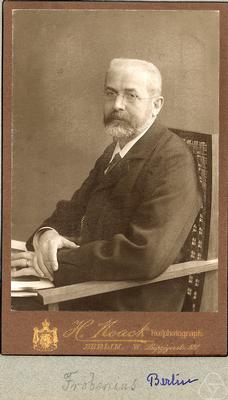Frobenius covariant on:
[Wikipedia]
[Google]
[Amazon]
In
 The Frobenius covariants of a matrix can be obtained from any
The Frobenius covariants of a matrix can be obtained from any
matrix theory
In mathematics, a matrix (plural matrices) is a rectangular array or table of numbers, symbols, or expressions, arranged in rows and columns, which is used to represent a mathematical object or a property of such an object.
For example,
\begi ...
, the Frobenius covariants of a square matrix are special polynomials of it, namely projection matrices ''A''''i'' associated with the eigenvalues and eigenvectors
In linear algebra, an eigenvector () or characteristic vector of a linear transformation is a nonzero vector that changes at most by a scalar factor when that linear transformation is applied to it. The corresponding eigenvalue, often denote ...
of .Roger A. Horn and Charles R. Johnson (1991), ''Topics in Matrix Analysis''. Cambridge University Press, They are named after the mathematician Ferdinand Frobenius.
Each covariant is a projection on the eigenspace
In linear algebra, an eigenvector () or characteristic vector of a linear transformation is a nonzero vector that changes at most by a scalar factor when that linear transformation is applied to it. The corresponding eigenvalue, often denote ...
associated with the eigenvalue .
Frobenius covariants are the coefficients of Sylvester's formula In matrix theory, Sylvester's formula or Sylvester's matrix theorem (named after J. J. Sylvester) or Lagrange−Sylvester interpolation expresses an analytic function of a matrix as a polynomial in , in terms of the eigenvalues and eigenvectors ...
, which expresses a function of a matrix as a matrix polynomial, namely a linear combination
of that function's values on the eigenvalues of .
Formal definition
Let be adiagonalizable matrix
In linear algebra, a square matrix A is called diagonalizable or non-defective if it is similar to a diagonal matrix, i.e., if there exists an invertible matrix P and a diagonal matrix D such that or equivalently (Such D are not unique.) ...
with eigenvalues ''λ''1, …, ''λ''''k''.
The Frobenius covariant , for ''i'' = 1,…, ''k'', is the matrix
:
It is essentially the Lagrange polynomial
In numerical analysis, the Lagrange interpolating polynomial is the unique polynomial of lowest degree that interpolates a given set of data.
Given a data set of coordinate pairs (x_j, y_j) with 0 \leq j \leq k, the x_j are called ''nodes'' an ...
with matrix argument. If the eigenvalue ''λ''''i'' is simple, then as an idempotent projection matrix to a one-dimensional subspace, has a unit trace
Trace may refer to:
Arts and entertainment Music
* ''Trace'' (Son Volt album), 1995
* ''Trace'' (Died Pretty album), 1993
* Trace (band), a Dutch progressive rock band
* ''The Trace'' (album)
Other uses in arts and entertainment
* ''Trace'' ...
.
Computing the covariants
 The Frobenius covariants of a matrix can be obtained from any
The Frobenius covariants of a matrix can be obtained from any eigendecomposition
In linear algebra, eigendecomposition is the factorization of a matrix into a canonical form, whereby the matrix is represented in terms of its eigenvalues and eigenvectors. Only diagonalizable matrices can be factorized in this way. When the matr ...
, where is non-singular and is diagonal with .
If has no multiple eigenvalues, then let ''c''''i'' be the th right eigenvector of , that is, the th column of ; and let ''r''''i'' be the th left eigenvector of , namely the th row of −1. Then .
If has an eigenvalue ''λ''''i'' appearing multiple times, then , where the sum is over all rows and columns associated with the eigenvalue ''λ''''i''.
Example
Consider the two-by-two matrix: : This matrix has two eigenvalues, 5 and −2; hence . The corresponding eigen decomposition is : Hence the Frobenius covariants, manifestly projections, are : with : Note , as required.References
{{Reflist Matrix theory